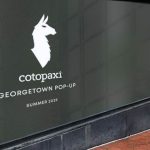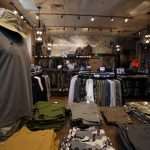U.K. retail sales rose 0.3 percent in September on a like-for-like basis from September 2010, when sales had risen 0.5 percent. On a total basis, sales were up 2.5 percent, against a 2.2 percent increase in September 2010.
Food sales growth was similar to that in July and August. Non-food sales improved a little but remained challenging. Homewares showed a modest uplift, though sales were still often deal-driven. Larger purchases in particular were hit by fragile consumer confidence and the weak housing market. Clothing sales dropped off sharply in the end-of-month heatwave.
Non-food non-store (Internet, mail-order and phone) sales growth fell back after picking up in August. Sales were 10.1 percent up on a year ago, down from 12.6 percent in August and well below the 19.1 percent in September 2010.
“In these harsh times, we have to be thankful for this minor improvement in growth compared with August, but underlying conditions remain weak,” said Stephen Robertson, director general, British Retail Consortium. “Spending growth is below inflation meaning customers are buying less than this time last year. And there's no guarantee next month's figure will be better. Total sales growth has been flipping between 1.5 and 2.5 per cent for four months now and year-to-date like-for-like growth is zero.
“Short-lived factors such as the weather and discounting are influencing sales,” Robertson continued, “not any fundamental change in how customers are feeling. Hot weather at the end of September boosted spending on food and drink, but clothing sales slumped as the sun undermined interest in winter ranges.
“As we head into the year's most important trading period, we need a return of optimism. That requires people to feel that next year they will see some payback for the current pain.”
While retailers saw reasonable growth during the first weeks of September, hopes for a major improvement on recent months were dashed as the exceptionally hot weather kicked in during the final week, when hitting the shops was well down our list of priorities, noted Helen Dickinson, Head of Retail, KPMG.
“The food sector proved again to be more resilient than other sectors although, with the new academic year starting, schoolwear and shoes also did well,” Dickinson said. “Sales of home accessories, house textiles as well as toiletries and cosmetics showed signs of improvement. However, with consumers' incomes being squeezed from all sides, many shoppers continue to steer clear of big-ticket items.”
“As we are entering the crucial season in the run-up to Christmas the outlook may be described as “hopeful” but that's as good as it gets I am afraid.”















